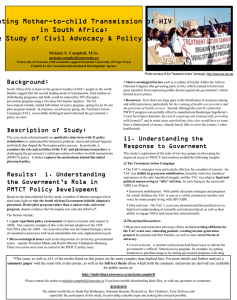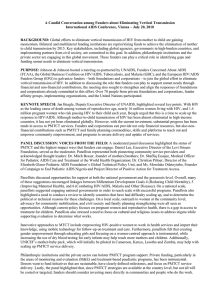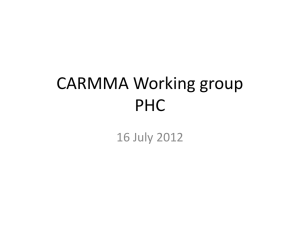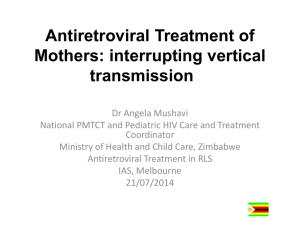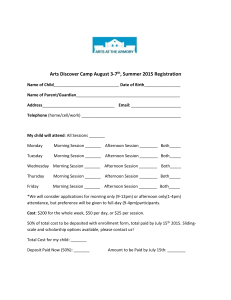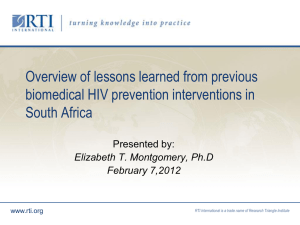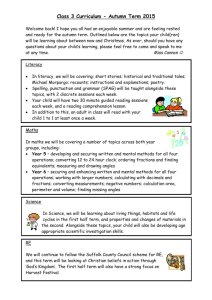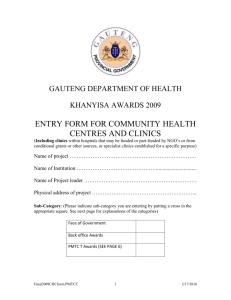Sample Presentation - I-Tech
advertisement
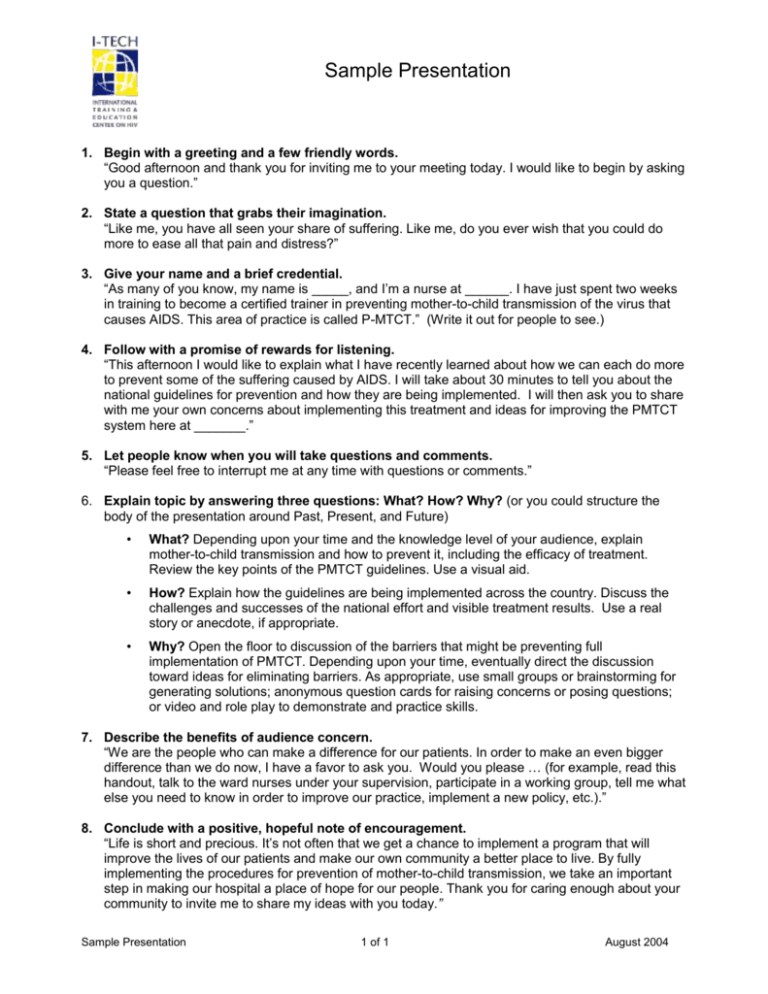
Sample Presentation 1. Begin with a greeting and a few friendly words. “Good afternoon and thank you for inviting me to your meeting today. I would like to begin by asking you a question.” 2. State a question that grabs their imagination. “Like me, you have all seen your share of suffering. Like me, do you ever wish that you could do more to ease all that pain and distress?” 3. Give your name and a brief credential. “As many of you know, my name is _____, and I’m a nurse at ______. I have just spent two weeks in training to become a certified trainer in preventing mother-to-child transmission of the virus that causes AIDS. This area of practice is called P-MTCT.” (Write it out for people to see.) 4. Follow with a promise of rewards for listening. “This afternoon I would like to explain what I have recently learned about how we can each do more to prevent some of the suffering caused by AIDS. I will take about 30 minutes to tell you about the national guidelines for prevention and how they are being implemented. I will then ask you to share with me your own concerns about implementing this treatment and ideas for improving the PMTCT system here at _______.” 5. Let people know when you will take questions and comments. “Please feel free to interrupt me at any time with questions or comments.” 6. Explain topic by answering three questions: What? How? Why? (or you could structure the body of the presentation around Past, Present, and Future) • What? Depending upon your time and the knowledge level of your audience, explain mother-to-child transmission and how to prevent it, including the efficacy of treatment. Review the key points of the PMTCT guidelines. Use a visual aid. • How? Explain how the guidelines are being implemented across the country. Discuss the challenges and successes of the national effort and visible treatment results. Use a real story or anecdote, if appropriate. • Why? Open the floor to discussion of the barriers that might be preventing full implementation of PMTCT. Depending upon your time, eventually direct the discussion toward ideas for eliminating barriers. As appropriate, use small groups or brainstorming for generating solutions; anonymous question cards for raising concerns or posing questions; or video and role play to demonstrate and practice skills. 7. Describe the benefits of audience concern. “We are the people who can make a difference for our patients. In order to make an even bigger difference than we do now, I have a favor to ask you. Would you please … (for example, read this handout, talk to the ward nurses under your supervision, participate in a working group, tell me what else you need to know in order to improve our practice, implement a new policy, etc.).” 8. Conclude with a positive, hopeful note of encouragement. “Life is short and precious. It’s not often that we get a chance to implement a program that will improve the lives of our patients and make our own community a better place to live. By fully implementing the procedures for prevention of mother-to-child transmission, we take an important step in making our hospital a place of hope for our people. Thank you for caring enough about your community to invite me to share my ideas with you today.” Sample Presentation 1 of 1 August 2004

